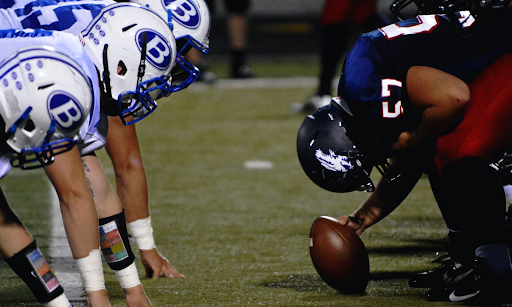Nothing is quite like the thrill of watching your chosen team and then potentially multiplying that excitement with a bet on their success. But did you know there’s more to predicting a winning wager than cheering for your favorite team – it’s all in the numbers!
Player statistics are vital components in understanding college football odds and can push them into more favorable territories if one knows how to decipher them correctly. In this blog post, we’ll explore the various ways individual player stats can help you make more informed bets, giving you more control over whether or not Lady Luck will be smiling down on you come game-time.
So get ready to deepen your understanding of both sports analytics and sports betting –here’s what you need to know!
Introduction to Player Statistics
Player statistics are more than just numbers on a sheet; they are a detailed record of a player’s on-field performance. It’s not just about how many touchdowns a quarterback throws or how many yards a running back rushes—it’s about how consistently they perform, react under pressure, and contribute to the overall team’s success.
In college football, these statistics are especially crucial as they often capture a player’s progress and potential, significantly influencing game odds. Understanding these statistics and their implications can help bettors make informed decisions, paving the way for more strategic and potentially successful wagers.
Key Player Statistics
The following are some key facts and numbers to research ahead of time before placing any wagers:
Quarterback Efficiency Rating(QER)
This quantifies a quarterback’s overall performance, considering both their passing and rushing abilities. This metric can be a reliable indicator of a team’s offensive potential.
- Higher QERs typically correlate with stronger offensive plays, increasing a team’s chances of winning.
- A sudden drop in a quarterback’s QER might indicate injuries or performance issues, potentially impacting game odds.
Yards Per Carry (YPC)
This measures the average distance a running back achieves per rush attempt. YPC can provide insights into a team’s rushing strategy and the effectiveness of its offensive line.
- A high YPC indicates a potent run game, which can control the pace of the game and run down the clock.
- A decrease in YPC might suggest problems with the offensive line or the running back, affecting the team’s overall performance and game odds.
Tackles and Interceptions
Tackles and interceptions reflect a player’s defensive abilities. These statistics are key for predicting how well a team can prevent its opponents from scoring.
- High tackle numbers reflect a player’s ability to halt offensive plays, contributing to a team’s defensive strength.
- Frequent interceptions can dramatically shift the momentum in a contest, potentially leading to increased scoring opportunities.
Statistics vs. Odds
Having a solid understanding of player statistics is only half the battle when it comes to making informed bets. The next step is understanding how these statistics directly influence the odds. Here’s how:
Odds reflect the perceived probability of a particular outcome, as judged by the bookmaker. More often than not, bookmakers rely heavily on player statistics to calculate these odds. So, when a quarterback has a high QER, or a running back boasts an impressive YPC, bookmakers consider these factors when setting the odds.
However, odds are also influenced by public sentiment. For example, even with excellent player stats, if the public heavily favors the opposing team, the odds might shift to reflect that sentiment. So, while player stats can give you an edge in understanding potential game outcomes, it’s essential to consider other elements such as public perception, team dynamics, and recent performance trends when placing a wager.
Analyzing Player Statistics for Betting
To effectively use these statistics in formulating betting strategies, consider the following points:
- Look for Consistency: Regularly high-performing players are more likely to maintain their form, making their teams more likely to win. Monitor players’ QER, YPC, tackles, and interceptions over a season to gauge their consistency.
- Consider the Competition: A player’s statistics can be inflated or deflated based on the strength of their competition. Make sure to contextualize player performance against the quality of the opposing teams faced.
- Understand the Team Dynamics: Even star players can struggle if their team doesn’t support their playstyle. Evaluate how well a player fits into a team’s overall strategy.
- Watch for Injuries: Injuries can drastically affect a player’s performance. Stay updated on player health and how it might affect their stats and, subsequently, the betting odds.
- Mind the Venue: Some players perform better at home than away, or vice versa. Factor in the venue when considering player statistics.
By keeping these points in mind, you can utilize player statistics to make informed betting decisions. Remember, while statistics are essential, they should be part of a broader analysis that includes understanding the teams, the dynamics of the game, and the FanDuel College Football odds. Combine all these elements, and you’ll be well on your way to making more informed bets.
Conclusion
In summary, player statistics are a vital component of sports betting. They offer deep insights into a player’s performance, team dynamics, and potential game outcomes. However, one must remember that these numbers are just part of the story.
To make the most of your sports betting experience, consider other factors such as public sentiment, recent performance trends, team dynamics, and the game’s venue.
By comprehensively analyzing these facets alongside statistics, you can create a well-rounded betting strategy and increase your chances of success. Always remember, informed betting is smart betting.
Help keep news FREE for our readers
Supporting your local community newspaper/online news outlet is crucial now more than ever. If you believe in independent journalism, then consider making a valuable contribution by making a one-time or monthly donation. We operate in rural areas where providing unbiased news can be challenging. Read More About Supporting The West Wales Chronicle























